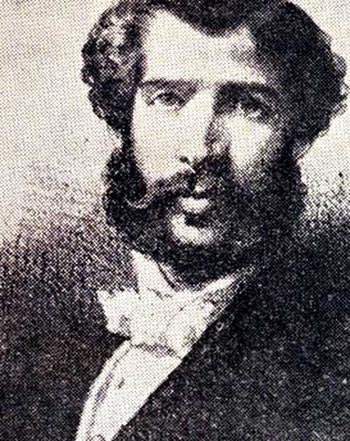2.1.9 The poetic work of Rafael María de Mendive (1821 – 1886)

Rafael María de Mendive, better known for having been José Martí’s mentor than for his contributions to Cuban poetry, was part of the genre’s leap from early Romanticism, marked by energetic rhetoric and bombastic, externalist language—despite its attempt to capture sentimental depths—to a simpler, more intimate expression.
Mendive mastered a varied range of verse and verse structures; the musicality of his creations has been studied in depth by critics and constitutes one of his greatest achievements.
Although his poetry does not embrace all the presuppositions of the nativist movement, it does turn to nature with a naive and astonished gaze, as an object of aesthetic enjoyment and also a refuge from human life and death. At the same time, his sensitivity also delves into peasant life from a social perspective, describing its miseries and boldly touching on the underlying political causes. In this sense, his vision recalls the cliché “the beauties of the physical world / the horrors of the moral world” with which Heredia referred to Cuba.
On the moral front, the poet held rigid views on good morals and a perennial obsession with purity. This is not reflected in any specific area of his work, but rather permeates the spectrum of his verses as a background from which he reinterprets the phenomena of reality in his poetry. Closely linked to this ethic was the religiosity evident in his verses. Although he professed Christianity, he was not, however, a blind believer; he questioned original sin and the very state of creation.
In addition to this religiosity was the mystical conception of pain as the only path to the purification of the soul, as well as the emphasis on the transience of the world and the insignificance of human existence:
“Pain! Always pain! What God encloses
From Eden and its first pain,
That Ideal that passes through the earth
Like a fatal trail
Of stormy doubts
Of fevers, of deliriums, of illusions,
Spawns of satanic passions,
Proud, of the voluptuous flesh…?
(…)
At the echo of my voice, it disappears
The luminous point,
And in harmonic waves, a beautiful hymn
Of heavenly songs, it seems
That spread throughout the world
The harps of the angels in chorus…
Oh! God! Whom I adore!
-I exclaimed upon waking up, with joy,-
Snatch in your creative flame
How much of my existence remains,
And all that I have been, and am, is a dream.
Where free from ideal humans,
By opening your immortal doors to me
Love, eternal love, just see…!”
He also ventured into epic poetry. In this sense, his poem “Los Dormidos,” some stanzas of which were suppressed by censorship, constitutes a representative example of this facet not only of the author but of all Cuban poetry. Its title is allegorical to the Spanish who ruled the island, “asleep,” blind to the prevailing social degradation and the push for independence that had resulted in the outbreak of the Ten Years’ War. In addition to the literary merits inherent in many of his works—others did not enjoy the same fate—the poet played an important role in the formation of Martí and the development of the core ideas that would lead the Apostle to organize the Necessary War.








